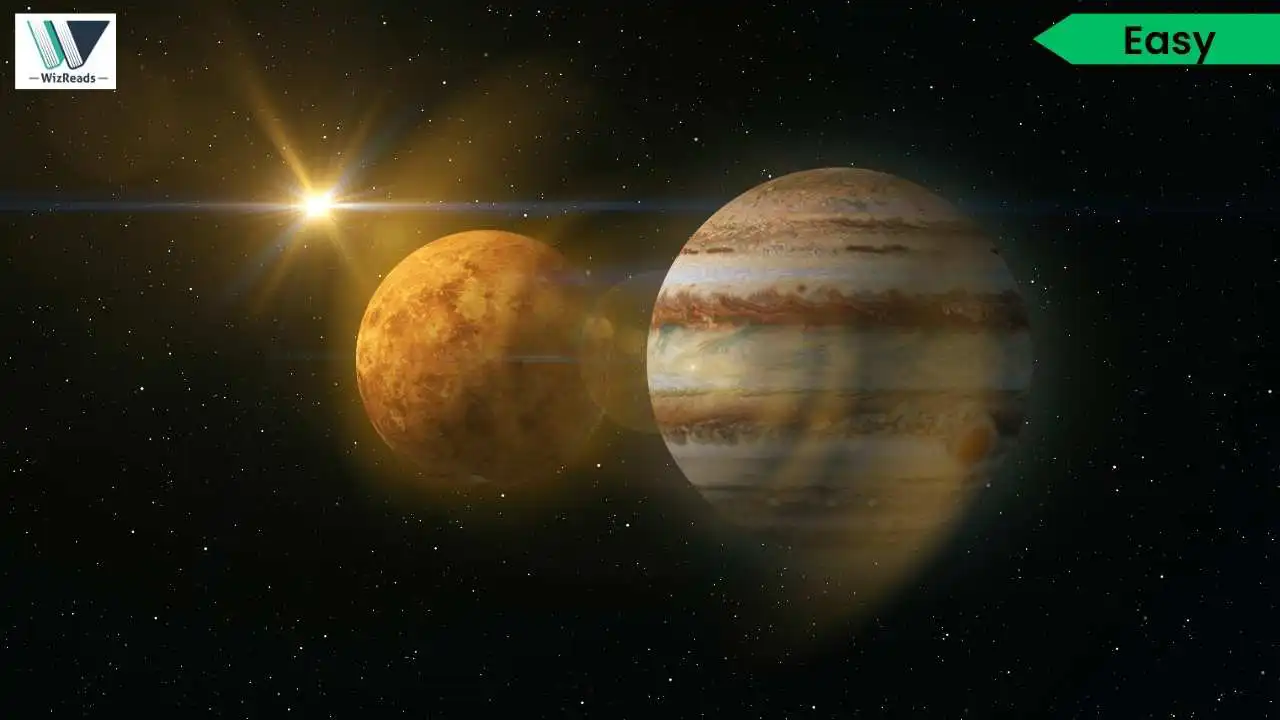
Newsletter Subscribe
Enter your email address below and subscribe to our newsletter

Enter your email address below and subscribe to our newsletter

Could Jupiter have been a star if circumstances were different? What separates a gas giant from a failed stellar object in our solar system? These Easy GMAT and GRE passages explore Jupiter’s unique characteristics and formation history, encouraging readers to distinguish between scientific evidence and speculative theories while analyzing the fine line between planetary and stellar classification.
Read these hard RC passage(s) in Science Technology and Environment and answer the question(s) that follows. You can choose the GMAT style Reading Passage and the question or the GRE RC variant and answer the GRE-style question. Even better, you could solve both.
While mainstream astronomy definitively classifies Jupiter as a gas giant planet, alternative perspectives on its nature have emerged from various sources throughout history. Some fringe theorists propose that Jupiter represents a “failed star,” arguing that its composition—approximately 90% hydrogen and helium—mirrors that of the Sun and suggests stellar potential. These proponents contend that Jupiter’s substantial mass, gravitational influence on surrounding bodies, and capacity to generate internal heat through compression demonstrate characteristics typically associated with stellar objects rather than conventional planets.
However, established astronomical science firmly refutes such comparisons. Mainstream researchers emphasize that Jupiter lacks the critical mass threshold necessary for nuclear fusion, the fundamental process that defines stellar classification. They maintain that while Jupiter’s composition resembles stellar materials, this similarity merely reflects the common origin of all solar system objects from the primordial nebula. These scientists assert that Jupiter’s formation followed standard planetary accretion processes, accumulating gas and dust around a solid core.
Interestingly, some ancient Mesopotamian astronomers initially categorized Jupiter among “wandering stars” due to its brightness and apparent movement across the sky. This historical perspective, though scientifically outdated, demonstrates how observational limitations can influence celestial classification systems.
Which of the following is NOT mentioned in the passage as a characteristic for arguing in favor of Jupiter’s stellar nature?
The passage explicitly states that “Jupiter lacks the critical mass threshold necessary for nuclear fusion, the fundamental process that defines stellar classification.” Nuclear fusion is described as the defining characteristic that Jupiter does not possess. All other options are mentioned as qualities Jupiter shares with stars: composition (90% hydrogen and helium “mirrors that of the Sun”), internal heat generation through compression, gravitational influence on surrounding bodies, and brightness (ancient astronomers categorized it among “wandering stars” due to its brightness).
Correct Answer: Choice (C)

Recent astronomical investigations have yielded compelling data regarding Jupiter’s formation processes and structural characteristics. Spectroscopic analysis reveals that Jupiter’s atmospheric composition consists predominantly of hydrogen and helium in proportions that closely parallel those found in main-sequence stars. This compositional congruence suggests that Jupiter accumulated material directly from the primordial solar nebula without significant fractionation of lighter elements.
Infrared observations demonstrate that Jupiter radiates approximately 1.6 times more energy than it receives from solar radiation. This excess thermal output indicates ongoing gravitational contraction within the planet’s interior, a phenomenon analogous to processes observed in pre-main-sequence stellar objects. The gravitational compression generates core temperatures exceeding 20,000 Kelvin, approaching conditions necessary for deuterium fusion.
However, Jupiter’s mass remains insufficient to sustain hydrogen fusion reactions that characterize stellar ignition. Current models calculate that Jupiter would require approximately 80 times its present mass to achieve the critical threshold for sustained nuclear burning. These findings suggest that while Jupiter exhibits proto-stellar characteristics, fundamental mass limitations preclude its classification as a failed star, supporting the conventional planetary accretion model.
As used in the passage, “preclude” most nearly means:
In the passage, “preclude” appears in the context “fundamental mass limitations preclude its classification as a failed star.” Here, the author is stating that Jupiter’s insufficient mass doesn’t just make stellar classification difficult or unlikely—it completely rules out or prevents such classification.
While both (B) “prevent” and (C) “exclude” are close synonyms, but in this specific context, “prevent” is more precise. “Preclude” means to prevent something from happening in the first place, while “exclude” typically means to leave something out of a group or category that already exists. The mass limitations prevent Jupiter from ever achieving stellar classification rather than excluding it from an existing group of stars.
Correct Answer: Choice (B)